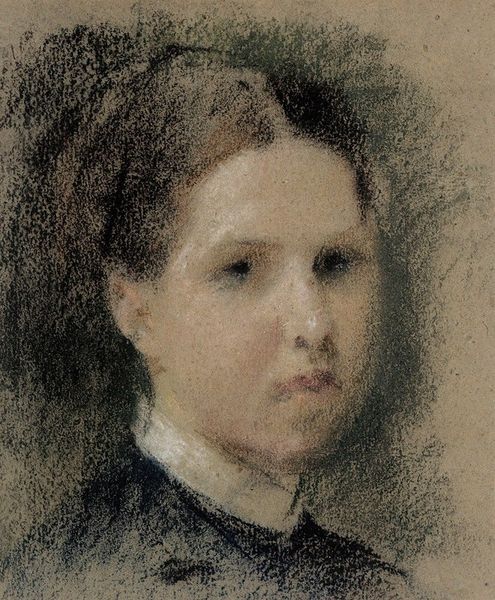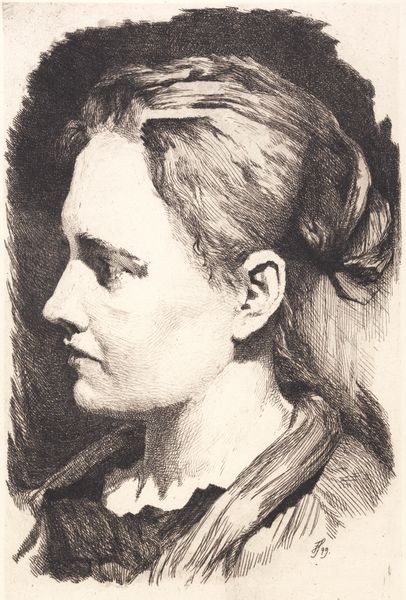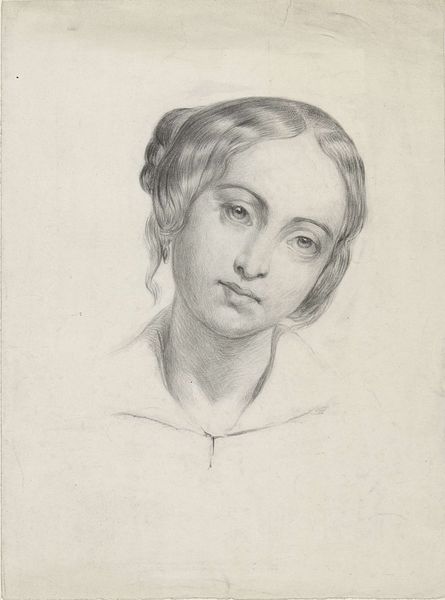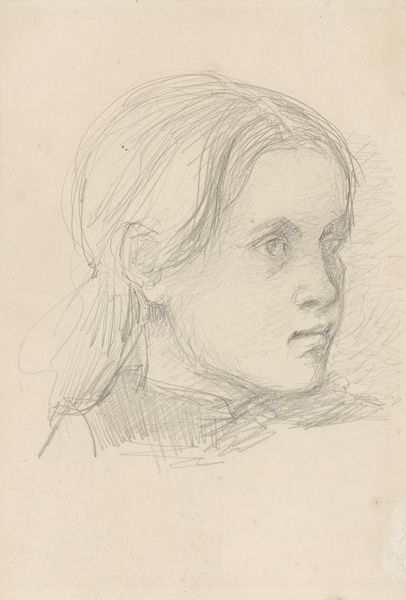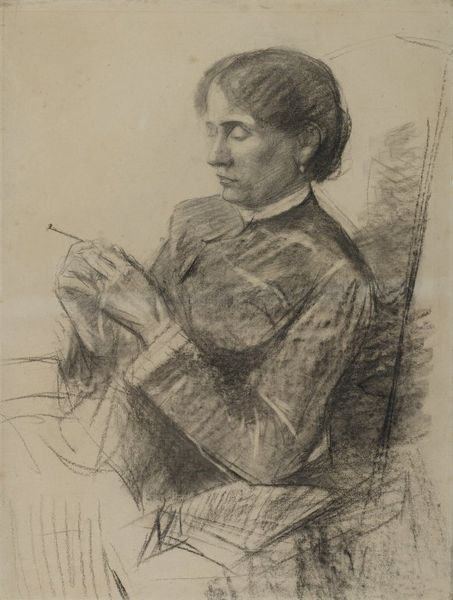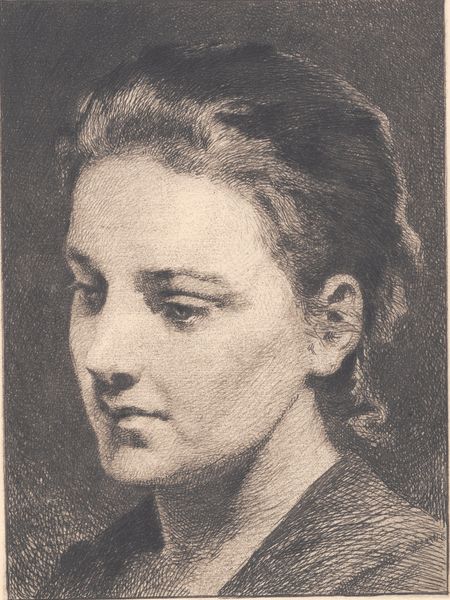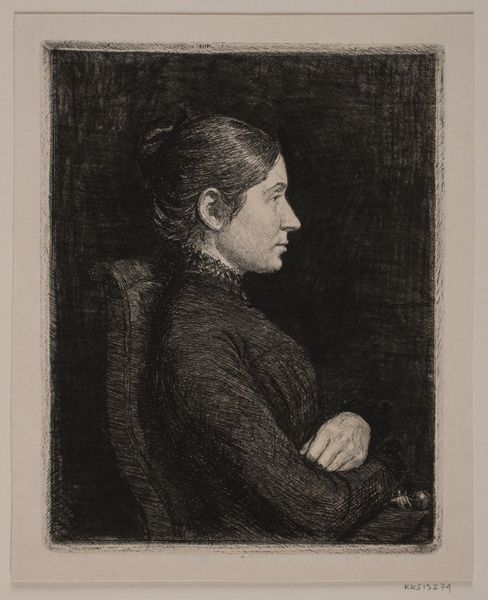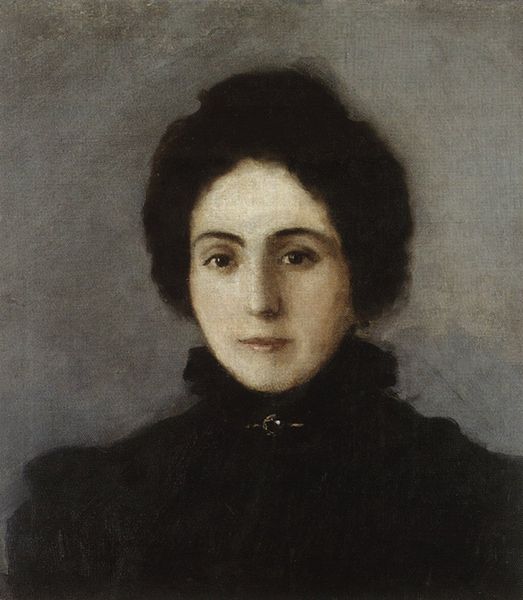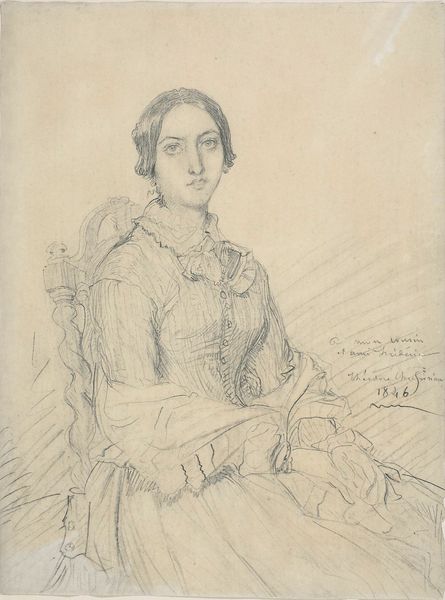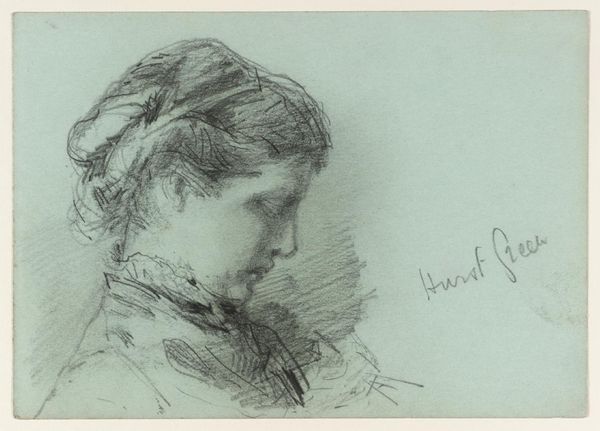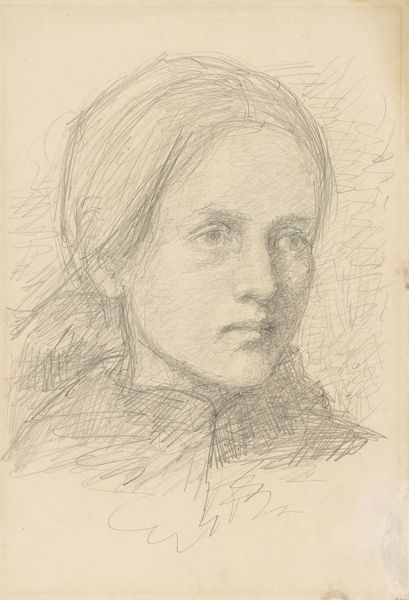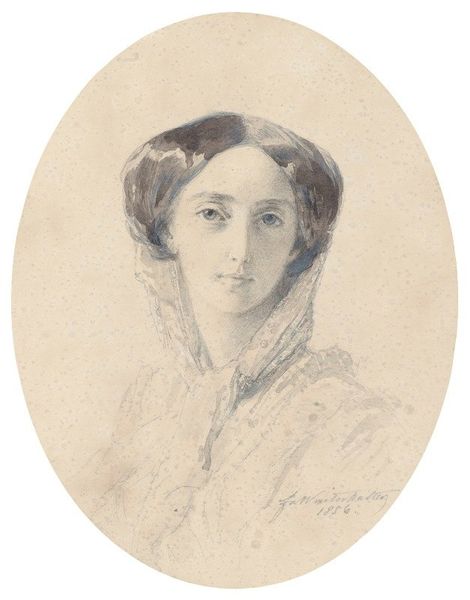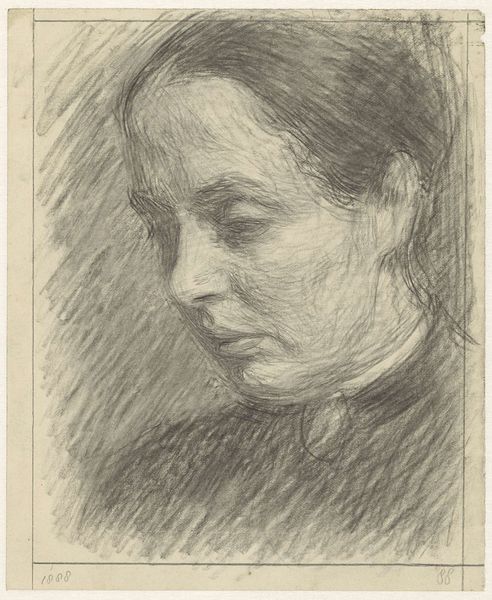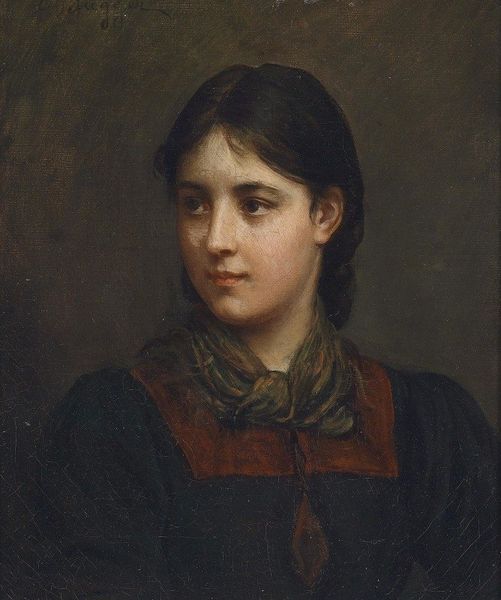
drawing, coloured-pencil, paper, dry-media
#
portrait
#
drawing
#
coloured-pencil
#
paper
#
dry-media
#
female-portraits
Copyright: Public domain
Curator: This sketch immediately evokes a sense of quiet intensity, doesn't it? The monochrome rendering adds to the impression of a moment captured with utmost focus. Editor: Precisely. What we have before us is a portrait drawing entitled "Portrait of N.A. Jaroshenko" executed by Arkhyp Kuindzhi. It appears to be a study done with colored pencils and other dry media on paper. While a precise date isn't available, the style and Kuindzhi's known period suggest the late 19th century. Curator: The use of dry media on paper enhances its dreamlike quality. The subtle blending and visible strokes create a soft but distinct contrast. Notice the sitter’s gaze; it holds a deep sense of introspection. Editor: Kuindzhi's choice to render Jaroshenko in profile presents her as a figure of intellect and perhaps even of stoicism. There's a deliberate avoidance of direct engagement with the viewer, suggesting a desire to protect inner thoughts. Who was she in relation to the artist? Was this portrait a formal commission or an intimate gesture of friendship? Curator: That's the intriguing thing about portraits, especially from this era, isn’t it? Jaroshenko’s downcast gaze evokes classical sculptures and coins with similar side views, elevating her status through familiar associations. It’s worth reflecting how the artist elevates their subjects in their visual representations, and what those visual tropes meant at the time. Editor: The absence of adornment concentrates our attention on her facial features, the lines of her neck and jaw. Yet this lack of specific detail paradoxically tells a wider story – hinting at perhaps modesty and restraint prized at the time. Curator: Looking closely at her tightly restrained hair, I can’t help but think about similar Victorian images of quiet women in mourning. Hair has always symbolized cultural identities. Considering its particular darkness, the work gains even deeper levels of association and reflection, inviting meditation about the role and position of the model in Kuindzhi’s life, his art, and, in the grander scheme, about gendered representation. Editor: It definitely speaks to how representations, be they sculptures or portrait drawings like this one, construct public personas with underlying personal narratives, whether intentional or implied by social context. Thank you. This encounter allows one to see how history, even in sketches, has deeply layered symbolism. Curator: Indeed, a brief but suggestive snapshot of time, a moment translated with remarkable sensitivity, as only skilled renderings on paper can achieve.
Comments
No comments
Be the first to comment and join the conversation on the ultimate creative platform.
